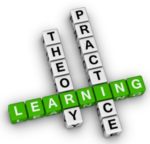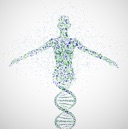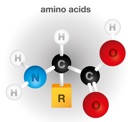 Having participated in teaching biology at a new place, I’ve completed a fresh run as an observer and found myself thinking a lot about introductory biology teaching decisions (the Bob Seger song “Against the Wind” has one of my favorite lines: “Deadlines and commitments/what to leave in… what to leave out.”). It occurred to me that there are two largely separable ways of teaching Introductory Biology that are quite different depending on what we want our students to be able to do. I believe the distinctions are not vastly unlike architects vs. engineers, or theoretical vs. applied physicists. It comes down to whether we want to be exposing our students to the how and why or the how-to and when-to. I’m almost exclusively in the former camp… but if we’re training medical students and technicians for industry, how much of ‘how does this work’ is needed? On the other hand, if we’re trying to attract and prepare P.I. (principal investigator)-level individuals and teach all comers ‘how life works’ alongside the wonders of what has evolved (and how), perhaps I can justify my approach. Continue reading
Having participated in teaching biology at a new place, I’ve completed a fresh run as an observer and found myself thinking a lot about introductory biology teaching decisions (the Bob Seger song “Against the Wind” has one of my favorite lines: “Deadlines and commitments/what to leave in… what to leave out.”). It occurred to me that there are two largely separable ways of teaching Introductory Biology that are quite different depending on what we want our students to be able to do. I believe the distinctions are not vastly unlike architects vs. engineers, or theoretical vs. applied physicists. It comes down to whether we want to be exposing our students to the how and why or the how-to and when-to. I’m almost exclusively in the former camp… but if we’re training medical students and technicians for industry, how much of ‘how does this work’ is needed? On the other hand, if we’re trying to attract and prepare P.I. (principal investigator)-level individuals and teach all comers ‘how life works’ alongside the wonders of what has evolved (and how), perhaps I can justify my approach. Continue reading
Lecture modules
A machine to teach with: ATPase as a core cellular mechanism
 Both studies and common sense indicate that common threads running through our teaching provide students with reinforcement of both thread components and the things they connect. This approach also highlights conveying principles rather than fact collecting as our learning objective. The details of a basic ATP hydrolysis reaction illustrate both key principles (how enzymes actually implement their abstract aspects [speed up reaction; lower reaction barrier], roles for specific amino acids and protein folding), value of understanding chemistry in thinking about biology) as well as providing students with a tool that they’ll see over and over… and over again: the core mechanism is found in nucleotide addition, kinase and phosphatase reactions, pre-mRNA splicing, the timing mechanisms of GTPases [tubulin, EF-Tu, GPCRs], and… oh yeah: virtually every ATP-driven or -coupled reaction in the cell!
Both studies and common sense indicate that common threads running through our teaching provide students with reinforcement of both thread components and the things they connect. This approach also highlights conveying principles rather than fact collecting as our learning objective. The details of a basic ATP hydrolysis reaction illustrate both key principles (how enzymes actually implement their abstract aspects [speed up reaction; lower reaction barrier], roles for specific amino acids and protein folding), value of understanding chemistry in thinking about biology) as well as providing students with a tool that they’ll see over and over… and over again: the core mechanism is found in nucleotide addition, kinase and phosphatase reactions, pre-mRNA splicing, the timing mechanisms of GTPases [tubulin, EF-Tu, GPCRs], and… oh yeah: virtually every ATP-driven or -coupled reaction in the cell!
Teaching majors biology better: think non-majors biology
In my own little sphere, I’ve been fascinated by some of the contrasts between design and delivery of majors vs. non-majors biology courses. Non-majors courses are subjected to thoughtful cherry-picking: “What is most relevant to student lives or futures?”, “What has ties to society and their interests”, “What can we successfully convey in the allotted time?”. On the other hand, in teaching majors biology, I think there is a lot of pressure for the ‘kitchen sink through a fire hose’ approach: ‘everything’ must be force-fed to students at whatever pace necessary to get it ‘into their heads’, and there simply isn’t time for the extravagance of relevance or interest. I propose that teaching majors biology more along the lines of non-majors biology can make our students more interested and provide them with more knowledge and understanding when we’re done.
You might be a mutant if… human mutations and phenotypes
 Students store Introductory Biology topics in ‘bubbles’, often unrelated to each other or the world the students inhabit. One challenging area where this happens a lot is mutation–how mutations happen, why mutations have consequences, and even the idea that mutations happen to ‘us.’ One of my favorite articles from the popular press had a title similar to “Blue eyes arose through human ‘mutation’ thousands of years ago”, with the word mutation offset in quotes–to indicate blue eye changes aren’t real mutations? In trying to make the concept more concrete and interesting to students, I’ve accumulated a series of human phenotypes (and primary literature sources) that amuse students while also driving key concepts home. The role of mutation in generating diversity and driving evolution is quietly but steadily made as well.
Students store Introductory Biology topics in ‘bubbles’, often unrelated to each other or the world the students inhabit. One challenging area where this happens a lot is mutation–how mutations happen, why mutations have consequences, and even the idea that mutations happen to ‘us.’ One of my favorite articles from the popular press had a title similar to “Blue eyes arose through human ‘mutation’ thousands of years ago”, with the word mutation offset in quotes–to indicate blue eye changes aren’t real mutations? In trying to make the concept more concrete and interesting to students, I’ve accumulated a series of human phenotypes (and primary literature sources) that amuse students while also driving key concepts home. The role of mutation in generating diversity and driving evolution is quietly but steadily made as well.
Amino acid building blocks: components for life’s machines
 Understanding the cellular roles of DNA and protein is challenging because they are, in important and meaningful ways, not analogous to anything in the macroscopic world. Proteins are a fascinating study: while cars, watches and houses are built by specialized builders, a single master factory, the ribosome, strings together all cellular proteins. And in a richly meaningful sense, that string then assembles itself (folds) into its final form. And the machines of the cell are almost unimaginably diverse in their forms and functions, the latter of which derive once again from within: the amino acid building blocks and precisely where they come to rest in the final three dimensional structure.
Understanding the cellular roles of DNA and protein is challenging because they are, in important and meaningful ways, not analogous to anything in the macroscopic world. Proteins are a fascinating study: while cars, watches and houses are built by specialized builders, a single master factory, the ribosome, strings together all cellular proteins. And in a richly meaningful sense, that string then assembles itself (folds) into its final form. And the machines of the cell are almost unimaginably diverse in their forms and functions, the latter of which derive once again from within: the amino acid building blocks and precisely where they come to rest in the final three dimensional structure.
Dependencies and foundations: introductory biology design
 We’ve long since passed the days when a strategy of “Just teach the students everything in the field” even begins to define a good introductory biology (or even specialized biology) course. Alas, this rut has ensnared textbooks; even those that start out nobly slender quickly bulk up to monstrous size. A related problem is the question of topic order–I think the historical approach (generally all the chemistry, a difficult to comprehend overview, then a firehose of detail) is out of touch with modern thinking about learning. As a way out of the maze, I suggest identifying the Big Ideas, selecting powerful, highly interlinked exemplars (hemoglobin profiled in this role here) and keeping a careful eye on what must come before what. In this post, I’d like to present the ideas of dependency (what must be understood prior to introducing a topic) and foundation (what understandings are enabled once the topic is mastered).
We’ve long since passed the days when a strategy of “Just teach the students everything in the field” even begins to define a good introductory biology (or even specialized biology) course. Alas, this rut has ensnared textbooks; even those that start out nobly slender quickly bulk up to monstrous size. A related problem is the question of topic order–I think the historical approach (generally all the chemistry, a difficult to comprehend overview, then a firehose of detail) is out of touch with modern thinking about learning. As a way out of the maze, I suggest identifying the Big Ideas, selecting powerful, highly interlinked exemplars (hemoglobin profiled in this role here) and keeping a careful eye on what must come before what. In this post, I’d like to present the ideas of dependency (what must be understood prior to introducing a topic) and foundation (what understandings are enabled once the topic is mastered).

